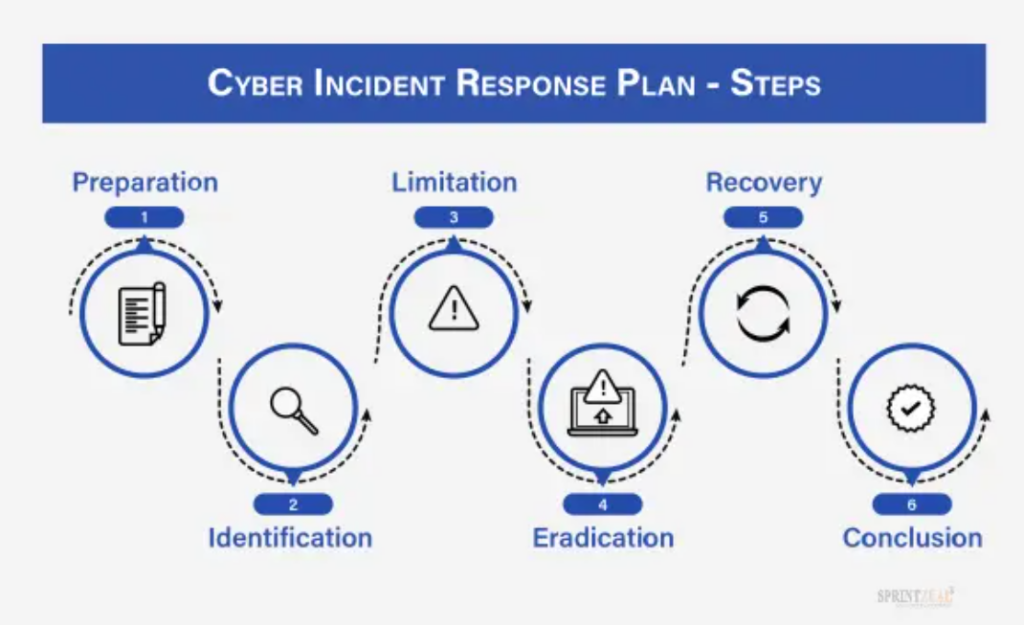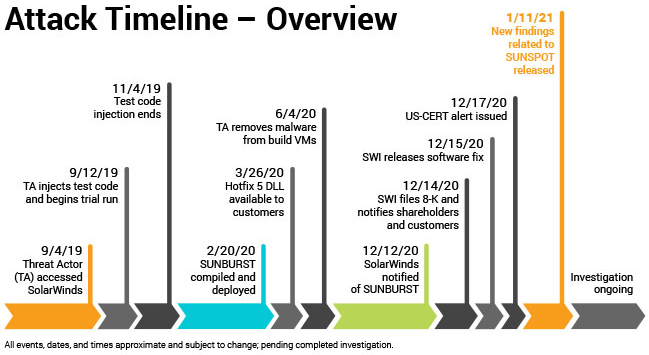
How to Develop a High-Impact Incident Response Plan
As cyber threats grow increasingly sophisticated and prevalent, the need for a well-defined Incident Response Plan (IRP) has never been more pressing. A robust IRP allows organizations to quickly and effectively address security breaches, minimizing damage and ensuring business continuity.
This article will delve into the critical components and strategies for developing a robust IRP, ensuring your organization is well-prepared to handle and recover from cyber incidents with agility and efficiency.
Core components of an effective incident response plan
An effective incident response plan is built on several key components, each crucial to managing and mitigating the impact of a cyber incident.
1. Preparation: The foundation of your IRP
Preparation is the cornerstone of any successful incident response strategy. This phase involves setting up the necessary infrastructure and protocols to handle potential security incidents effectively.
- Conduct a risk assessment: Identify and evaluate potential vulnerabilities within your organization. Regularly assess these risks to stay ahead of emerging threats.
- Form an Incident Response Team (IRT): Assemble a dedicated team with clearly defined roles and responsibilities. Ensure that each team member understands their role in the event of a security breach.
- Establish communication channels: Develop clear communication procedures for internal and external stakeholders. Effective communication is crucial during an incident to coordinate response efforts and manage public relations.
- Prepare tools and resources: Ensure you have the necessary technology and resources for incident detection and response. This includes having updated software, security tools, and access to relevant data.
2. Identification: Detecting and validating incidents
The identification phase is critical for recognizing and validating the occurrence of a cyber incident. Early detection is key to mitigating damage and initiating an appropriate response.
- Implement monitoring systems: Use advanced threat detection tools and establish continuous monitoring to identify anomalies in real-time. These systems help in spotting potential security breaches before they escalate.
- Classify the incident: Once an incident is detected, classify it based on severity and potential impact. This classification helps prioritize response actions and allocate resources effectively.
3. Containment: Limiting the spread of the incident
Containment is about managing the immediate impact of the incident and preventing it from spreading further. This phase is essential for minimizing damage and preserving evidence.
- Short-term containment: Isolate affected systems quickly to prevent further compromise. This might involve disconnecting devices from the network or disabling compromised accounts.
- Long-term containment: Implement strategies to ensure the threat does not reoccur. This may include applying patches, updating security configurations, and monitoring for residual threats.
4. Eradication: Removing the root cause
Eradication focuses on identifying and eliminating the root cause of the incident. This step is crucial for ensuring the threat is completely addressed and does not reappear.
- Remove the threat: Identify and eliminate malware or any other malicious entities from your systems. Ensure that all traces of the threat are eradicated to prevent future incidents.
- Restore systems: Return affected systems to their pre-incident state. Verify that systems are clean and secure before bringing them back online.
5. Recovery: Restoring normal operations
The recovery phase is about resuming normal business operations and restoring any lost data or functionality. Effective recovery is crucial for minimizing downtime and operational disruption.
- Restore data: Recover lost or corrupted data from backups. Verify the integrity of restored data to ensure that it is accurate and free of threats.
- Verify systems: Conduct thorough testing to confirm that all systems are fully operational and secure. Ensure that no vulnerabilities remain that could be exploited.

Key incident response metrics and their use
In today’s cybersecurity landscape, where threats continuously evolve, the focus has shifted from “if” an organization will face a data breach to “when.” To bolster your incident response capabilities, it’s crucial to rely on quantitative metrics that reveal the effectiveness of your strategies. Following are seven key incident response metrics to enhance your security posture:
- Mean Time to Detect (MTTD): This metric calculates the average duration it takes to identify a security incident. By analyzing MTTD, you can gauge how effectively your team is spotting threats.
- Mean Time to Acknowledge (MTTA): MTTA measures the time between receiving an alert and initiating a response. A lower MTTA indicates a more responsive team, crucial for prioritizing and addressing high-risk alerts promptly.
- Mean Time to Recovery (MTTR): This metric tracks the time needed to restore systems after a breach. For example, if downtime averages 10 minutes for one incident and 20 minutes for another, discrepancies in MTTR highlight areas for process improvement.
- Mean Time to Contain (MTTC): MTTC combines detection, acknowledgment, and recovery times to offer a comprehensive view of your incident response efficiency. A high MTTC suggests areas in need of refinement, whether in detection speed or response coordination.
- System Availability: This measures the reliability of your third-party vendors, which is especially crucial during incidents like DDoS attacks. Higher system availability percentages indicate better vendor performance and reliability.
- Service Level Agreement (SLA) Compliance: Comparing SLA commitments with actual performance helps assess vendor reliability. If vendors fail to meet agreed-upon metrics like availability or recovery times, it may signal a need for alternative solutions.
- Mean Time Between Failures (MTBF): MTBF assesses the average time between system failures. Lower MTBF indicates more frequent issues, suggesting potential weaknesses or aging systems that may need replacement.
The SolarWinds Breach: Lessons from Microsoft’s missed red flags in Incident Response
In December 2020, it was revealed that a sophisticated cyberattack, attributed to a Russian state-sponsored group, had compromised SolarWinds’ Orion software platform. This software is widely used by governments and private organizations to monitor and manage their IT infrastructure. The breach allowed attackers to potentially access sensitive data from a broad range of high-profile targets, including Microsoft.
The SolarWinds cyberattack, discovered in 2020, unveiled significant vulnerabilities in global cybersecurity. Yet, a crucial aspect of this incident was a glaring missed opportunity for prevention, which traced back several years before the attack.
In 2016, Microsoft engineer Andrew Harris uncovered a critical security flaw in the company’s Active Directory Federation Services (ADFS), a key product that facilitates single sign-on for users. This flaw posed a severe risk, leaving millions of users, including federal employees, vulnerable to exploitation by hackers.
Despite Harris’s detailed report to the Microsoft Security Response Center (MSRC), his concerns were dismissed. The MSRC, which is responsible for evaluating security flaws, deemed the issue insufficiently severe because it didn’t meet its undefined “security boundary” criteria. This term, used to dismiss reports, had no formal definition and often resulted in overlooked vulnerabilities.
Harris’s subsequent attempts to escalate the issue to Microsoft product managers met with mixed reactions. While the product leaders acknowledged the flaw’s seriousness, they were reluctant to act quickly.
Harris suggested a temporary fix—disabling the seamless single sign-on feature to mitigate the risk. However, this solution was rejected due to concerns it might alienate government clients and impact Microsoft’s competitive positioning. At the time, Microsoft was angling for substantial government cloud contracts, and acknowledging the flaw might jeopardize these lucrative opportunities.
The SolarWinds breach underscores the risks of overlooking vulnerabilities and the need for a proactive, transparent approach to cybersecurity.

[Image Source: KrebsonSecurity]
Incident response handling by Microsoft in the SolarWinds cyberattack
Upon discovering that their own systems were affected by the SolarWinds breach, Microsoft acted swiftly. Their security team detected unusual activity and immediately launched an internal investigation to assess the extent of the compromise. Microsoft’s advanced threat detection capabilities played a crucial role in identifying the intrusion early on.
1. Comprehensive investigation
Microsoft undertook a thorough forensic investigation to understand how the attackers gained access and what they might have done within their environment. They worked closely with law enforcement and other industry experts to gather intelligence on the attack methods and to contain the threat.
2. Transparent communication
In the face of the breach, Microsoft maintained transparency with its stakeholders. The company publicly acknowledged the incident and provided updates on its findings and response efforts. They shared insights into the attack vectors used and how they were mitigating the threat, which helped in maintaining trust with customers and partners.
3. Strengthening security measures
Following the attack, Microsoft enhanced its own security protocols and practices. They updated their software to address vulnerabilities exploited by the attackers and strengthened their internal security measures to prevent similar incidents in the future. This included improved monitoring and detection systems and increased focus on threat intelligence and response.
Microsoft also collaborated with other affected organizations and cybersecurity experts to share information about the attack and its implications. They also provided guidance and support to help other organizations strengthen their defenses against similar threats.
What can CTOs learn from Microsoft’s cyberattack?
CTOs can take away some crucial lessons from how Microsoft managed the SolarWinds cyberattack. First and foremost, the importance of early detection and quick response cannot be overstated. Microsoft’s rapid identification of the breach was key to limiting the damage. For any organization, investing in advanced threat detection systems means you can spot and address problems before they escalate into major issues.
Another important takeaway is the need for a thorough investigation. Microsoft’s in-depth analysis of the attack revealed not just how the hackers got in but also what they did once they were inside. This understanding is crucial for preventing future attacks and should guide your own security enhancements.
Transparency is also vital. Microsoft’s decision to openly communicate the breach details and their response efforts helped maintain trust with customers and partners. As a CTO, being forthright about what happened, its impact, and how you’re addressing it can significantly affect your organization’s reputation and stakeholder confidence.
Also, remember to regularly update and test your incident response plans. The landscape of cyber threats is constantly changing, and keeping your security practices up-to-date is crucial. By embedding these lessons into your security strategy, you can better protect your organization and enhance its overall resilience against future cyber threats.
In brief
In cybersecurity, a robust incident response plan is essential for CTOs and IT leaders. By focusing on preparation, identification, containment, eradication, recovery, and ongoing improvement, organizations can enhance their resilience against cyber threats. With a well-structured incident response plan, your organization can sail through the challenges of cyber threats with confidence and agility.